On Saturday, October 1, Prof. Pier-Carlo Tommasi’s JPN461 class visited the Honolulu Museum of Art (HoMA), where the Curator of Asian Art, Shawn Eichman, graciously agreed to give the UH Mānoa students a guided tour through a spectacular exhibition on Japanese Design: Rinpa. Below are some of the student responses:
I used to attend art school as a painting and illustration student. However, during my time as an art student, I had never focused on Japanese art very extensively, so it was very insightful to learn about the important aesthetics that define the culture. I could definitely sense the similarities and connections between the visual arts and language in a classical Japanese setting. […] It is really cool to experience first-hand the connections between the literature and the visual art aspects of classical Japan. The writing boxes were a great example of that. I never imagined so much detailed work would be put into something used to carry writing utensils and not necessarily meant to be displayed as an art piece. (Sidney Ihm)
Visiting HoMA to view the Japanese gallery was a great way to interact with these archives and get to know them first hand. It was especially great to have the insightful and knowledgeable curator, Shawn Eichman, talk to our class about this gallery. […] My favorite piece was the Chrysanthemums / Maple Tree screen in the center of the room. This screen was beautiful and included almost all of the design principles. We learned from the curator that gold screens such as this one’s original purpose was to reflect light to brighten rooms. I thought this was interesting because I didn’t know this and I hadn’t thought about it before. Because they were supposed to reflect light, that also meant they were intended to be viewed with lighting directly hitting the screen or from candles below. This is not the type of lighting in the museum, however, so Mr. Eichman “broke the rules” and shone his flashlight on the screen so we could see it how it was intended to be seen. I really enjoyed that part. The screen looked so different and the flashlight really enhanced the gold color of the screen as well as the details. (Sarah Domingo)
On our visit to the HoMA, I had my first experience learning about the Rinpa art movement, practiced by Ogata Kōrin and his disciples. I found curator Shaun Eichmann’s guidance and commentary on the pieces especially insightful, as it helped us piece together common threads that tied the pieces together aesthetically, such as the use of negative space and asymmetry, the use of layering in the pieces to create depth, and the use of unique and elegant materials to highlight and emphasize focus elements of each piece. If I were just looking in on the exhibition myself, I likely would not have picked up on those subtle elements that characterized each piece and enhanced their thematic elements. […] It really highlighted that one must take literature and other forms of art in the classical Japanese sphere together, and see how they build upon each other to create a cultural conversation. That, I think, is where we can build true understanding necessary for approaching, interpreting, and translating future pieces of classical Japanese literature. I’m happy that we were able to take the time to acquire that broader perspective. (Rui Kono)
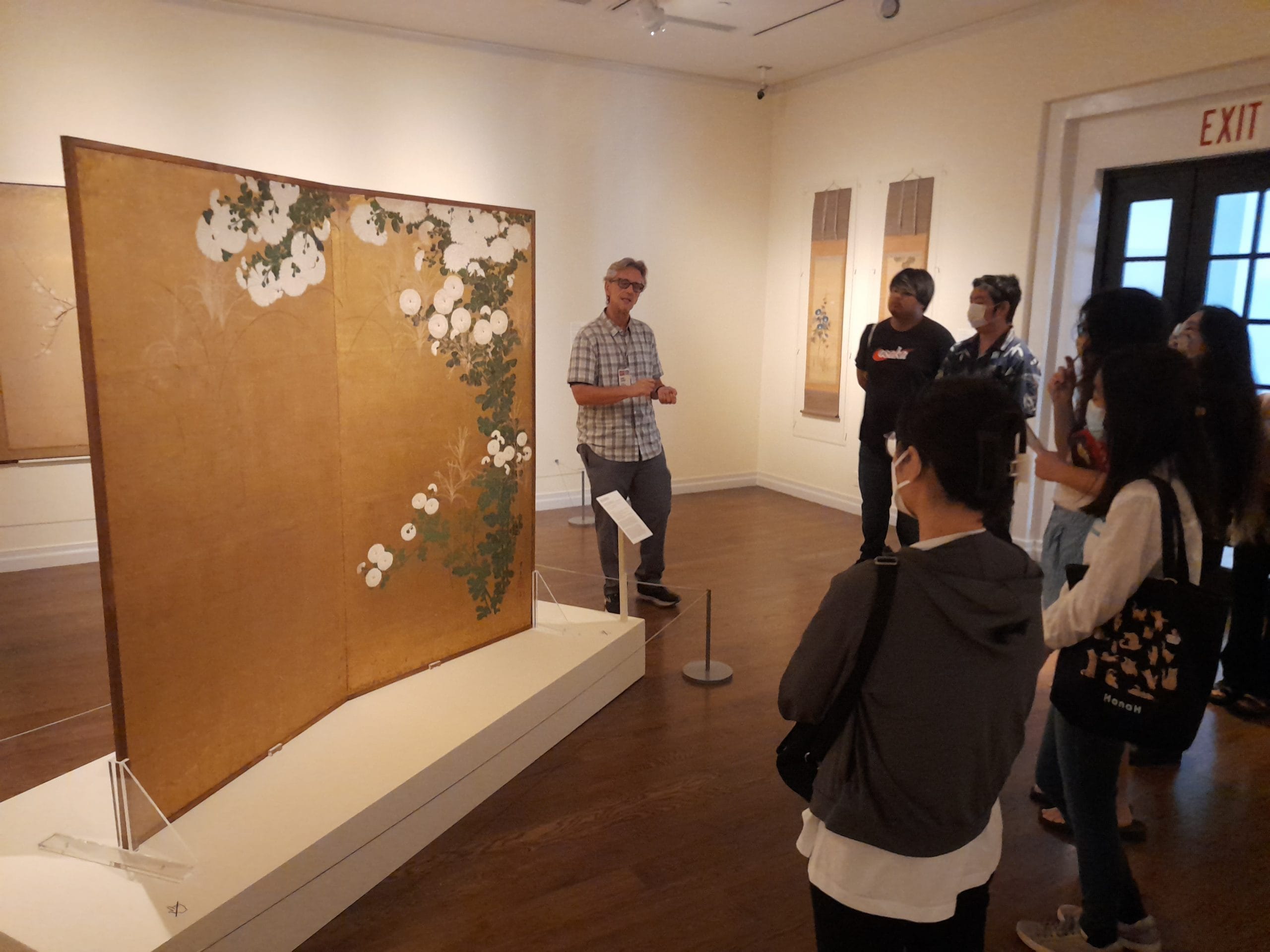
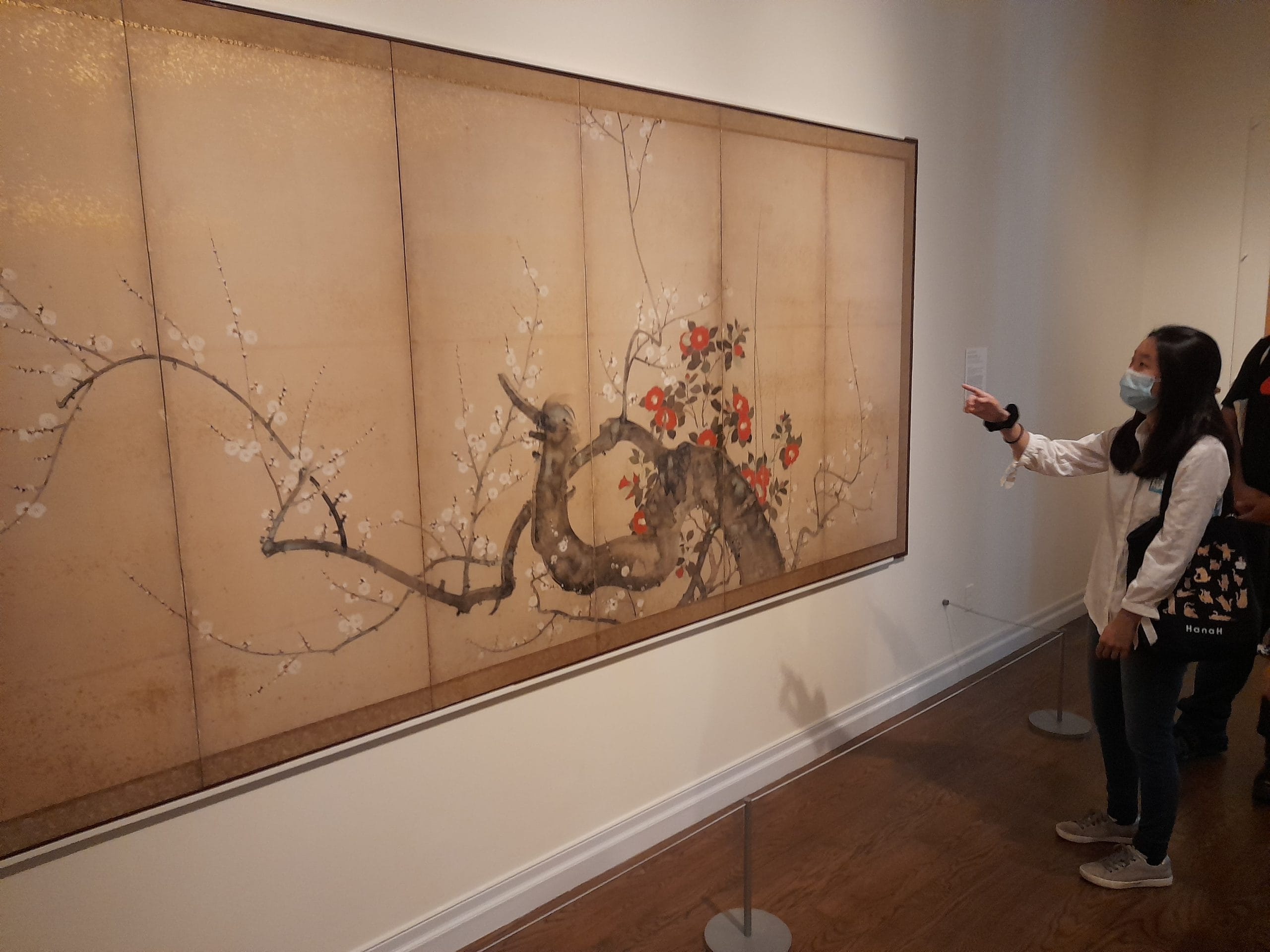

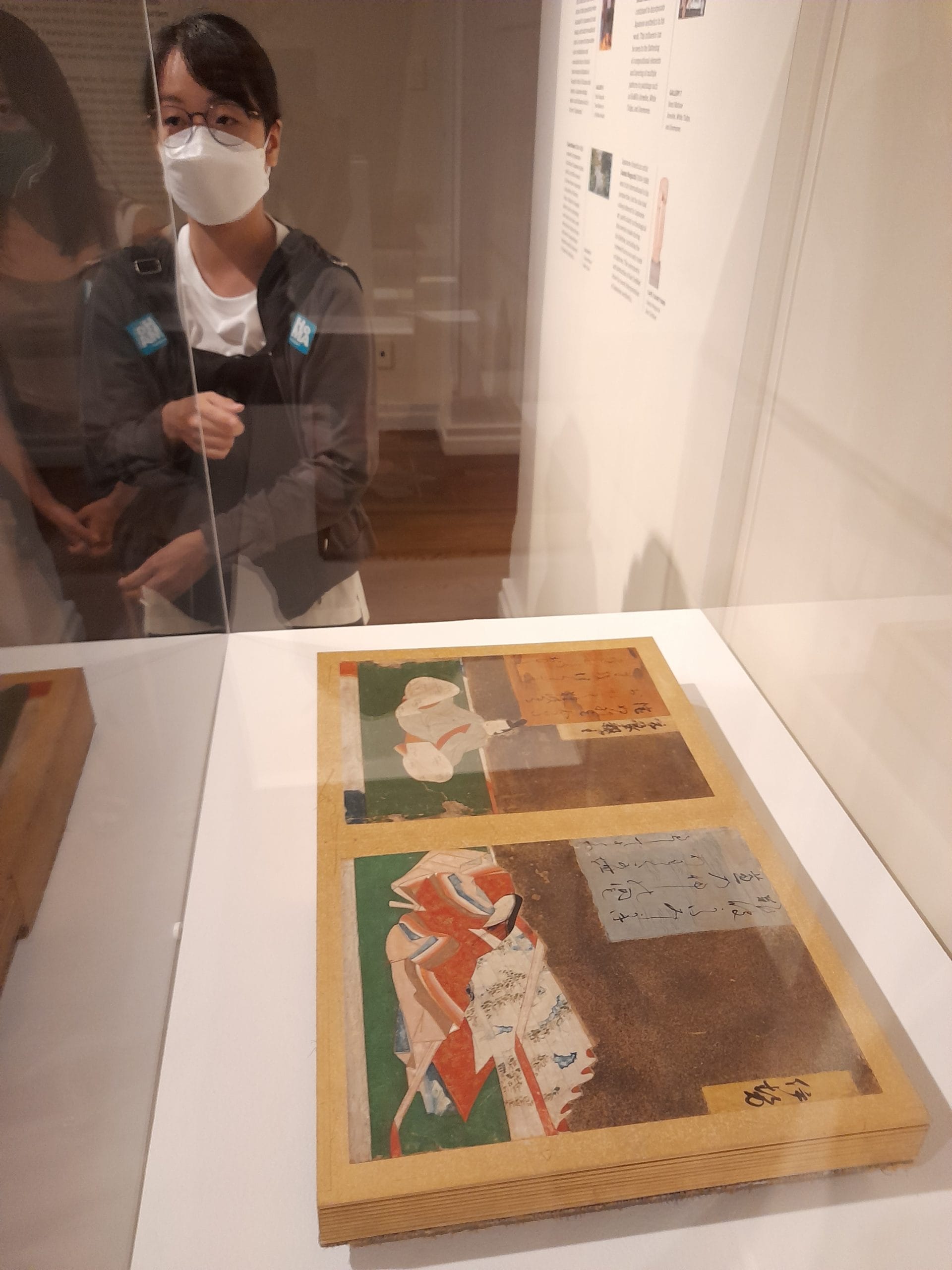
A few days after the field trip, HoMA Research Associate Kiyoe Minami visited the Mānoa campus to give a talk on the Lane Collection, one of the most important archive of Japanese rare books and prints in Hawaii. At the end of the semester, students in Prof. Tommasi’s course will engage in public-facing scholarship by conducting short research projects and contributing to the cataloging of this collection. After Ms. Minami’s presentation, JPN461 student Sho Tanaka remarked enthusiastically: “It was sort of strange to learn that even if these items were from a few hundred years ago, they showed that the people of the time had similar interests as today, like fashion, health, fortune telling, manga, and games. Just to name a few. Understanding this, it made me think about the importance of preserving, cataloging, and displaying these historical items to better understand our history and where we come from. I am now definitely interested in helping with the cataloging and translation of these texts.”
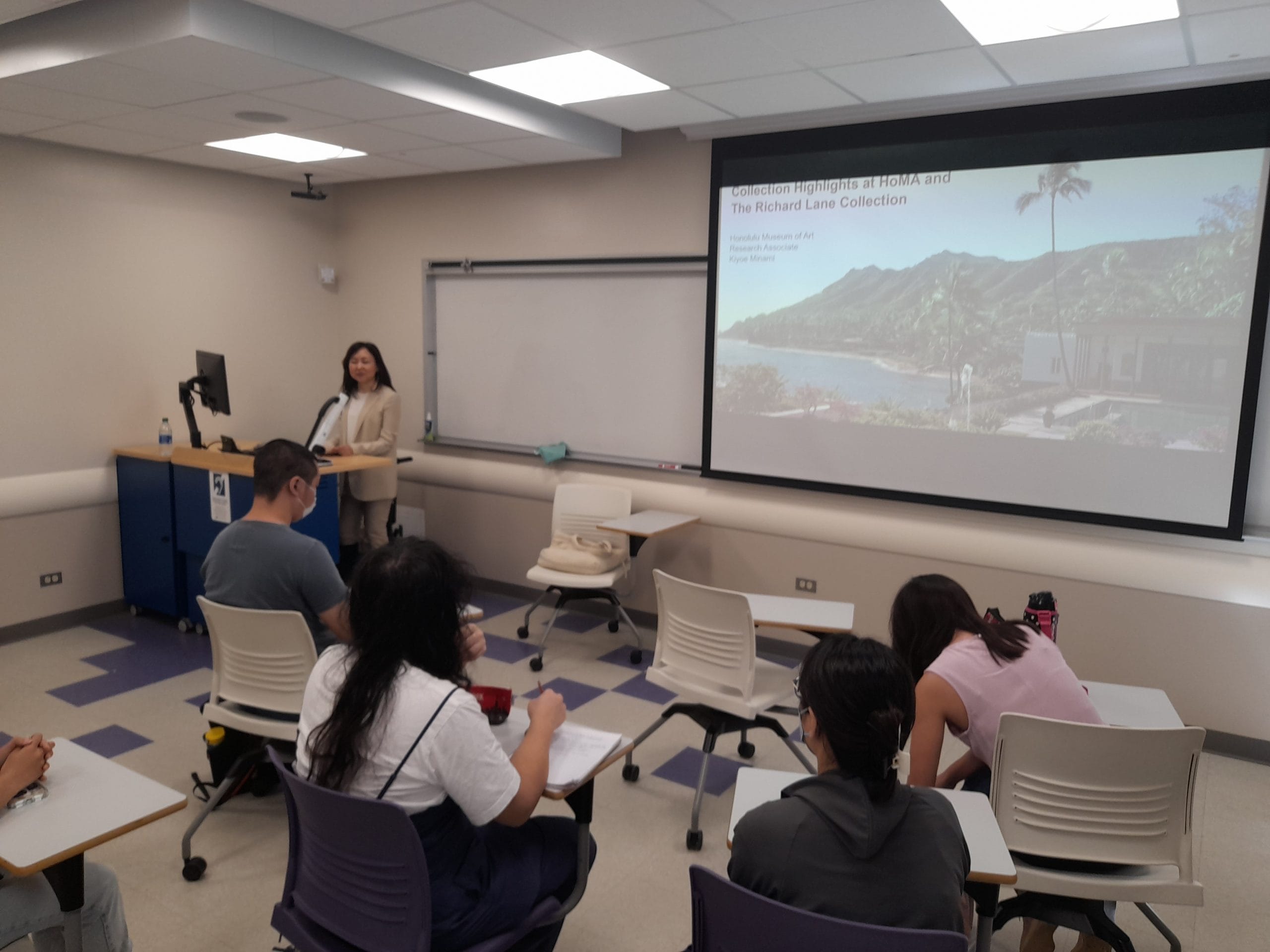
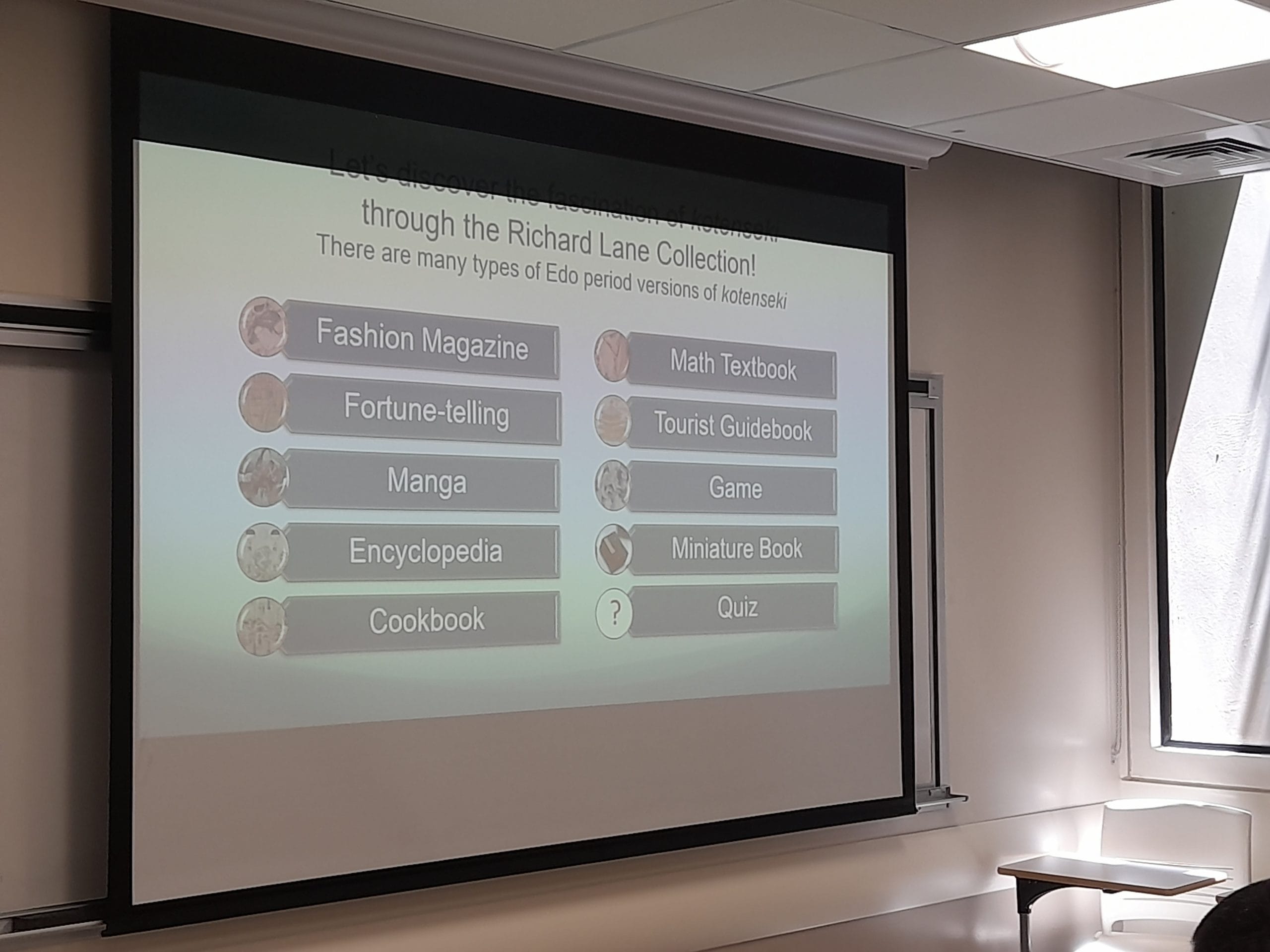

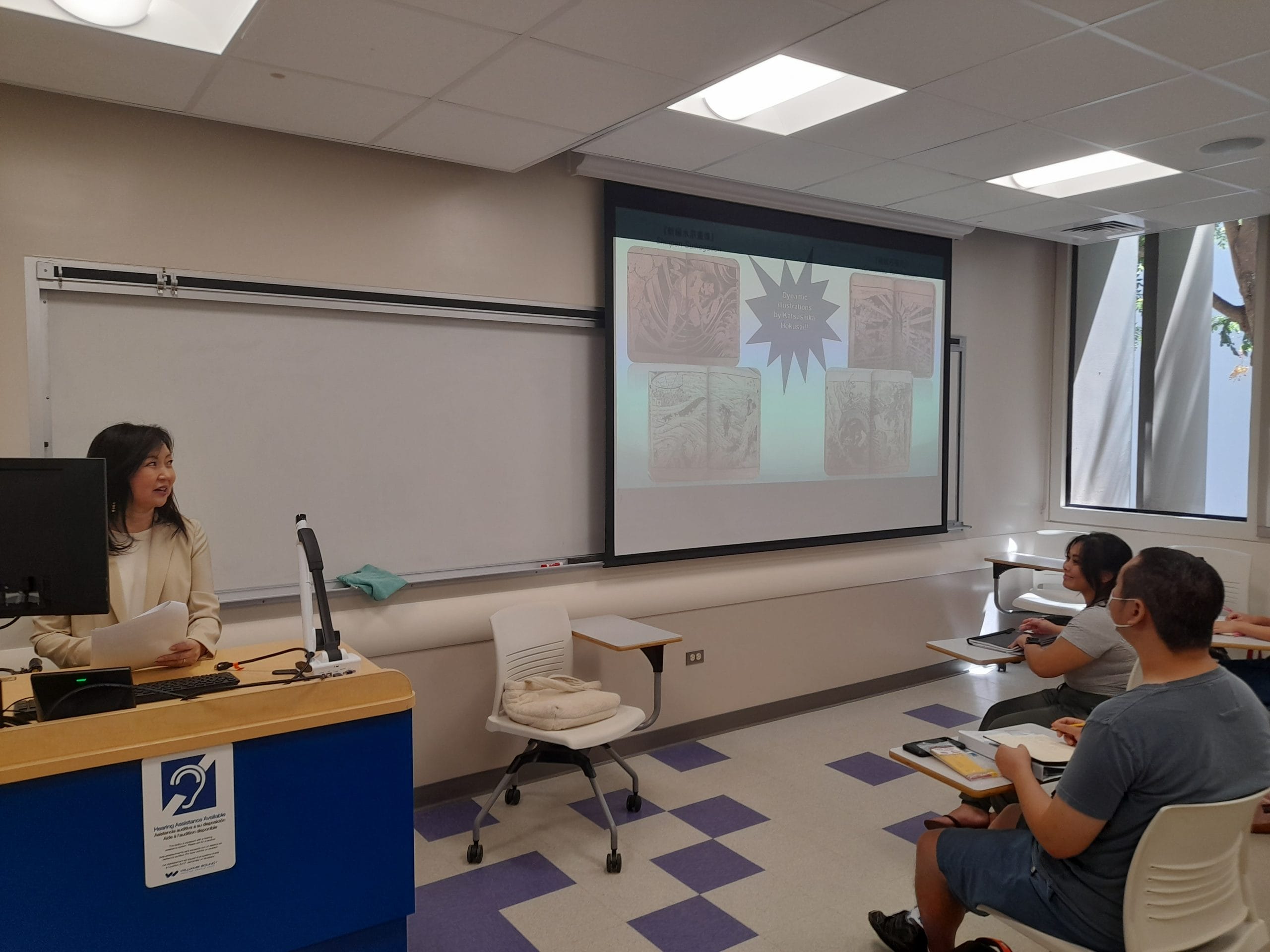
“As a scholar and instructor, one of my goals is to diversify the field and provide students with community-building opportunities. Such activities lead them to reimagine their contribution to knowledge production, augmenting their skills and envisioning possible career paths both in the public and the private sectors,” said Prof. Tommasi. “The Honolulu Museum of Art is a valued partner of the UH community. Our friendship has been cemented thanks to the efforts of Emeritus Professor Robert Huey, and we anticipate it to continue well into the future. In this spirit, earlier this year we presented a joint panel at the American Association for Teachers of Japanese (AATJ) Conference, discussing the pedagogical potential of Japanese primary sources. I hope my students will seize this opportunity to learn more about the transpacific heritage treasured in the Lane vault, and experience the archive as a creative space, in which different people and realities converge to generate new trajectories.”
The HoMA–EALL collaborative project is meant to draw attention to the ways in which interconnectedness with Japan has, through the movements of the transpacific diaspora, shaped our islands’ culture. Furthermore, not only does this work of archival unearthing contribute to reassessing the role of Hawaii as part of “Global Asias,” but it also showcases our unique document collections to the academic community worldwide.
For more information on these initiatives, please contact Dr. Tommasi at tommasi@hawaii.edu.
